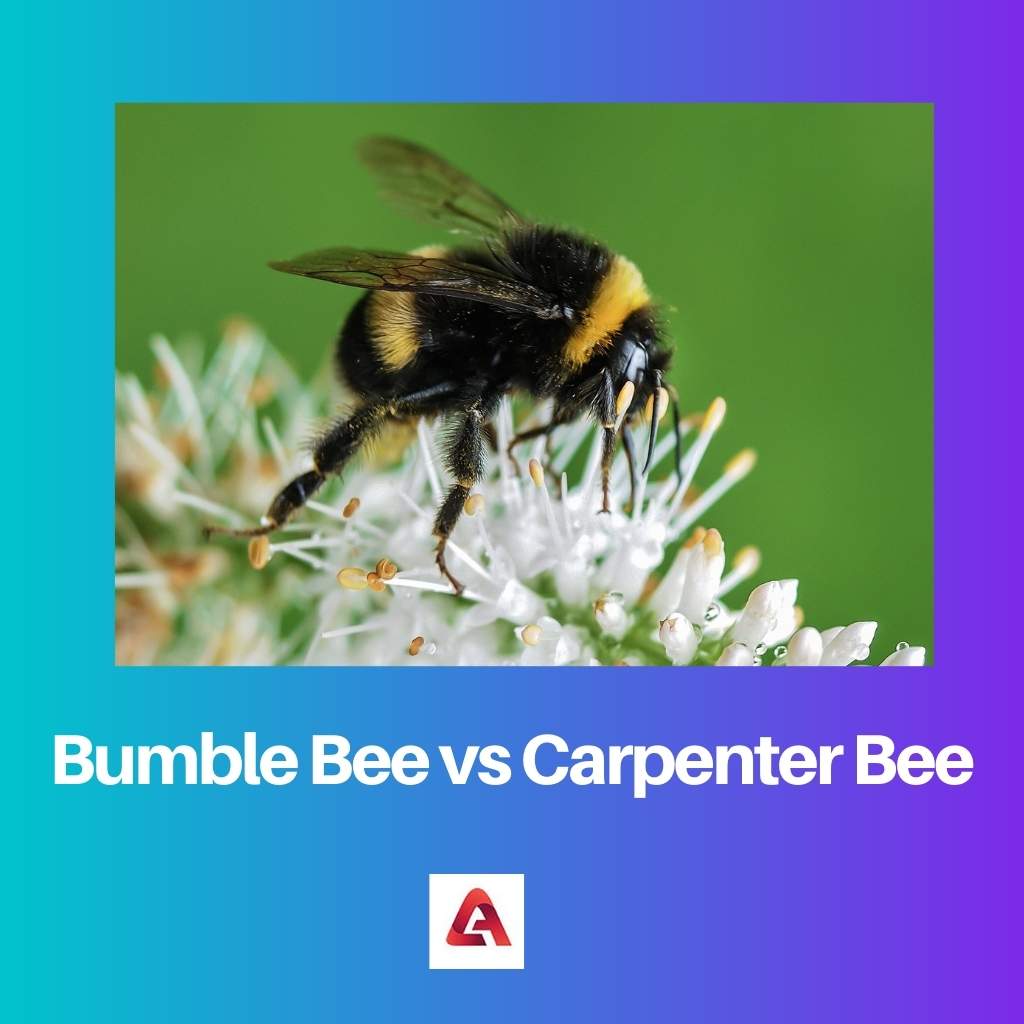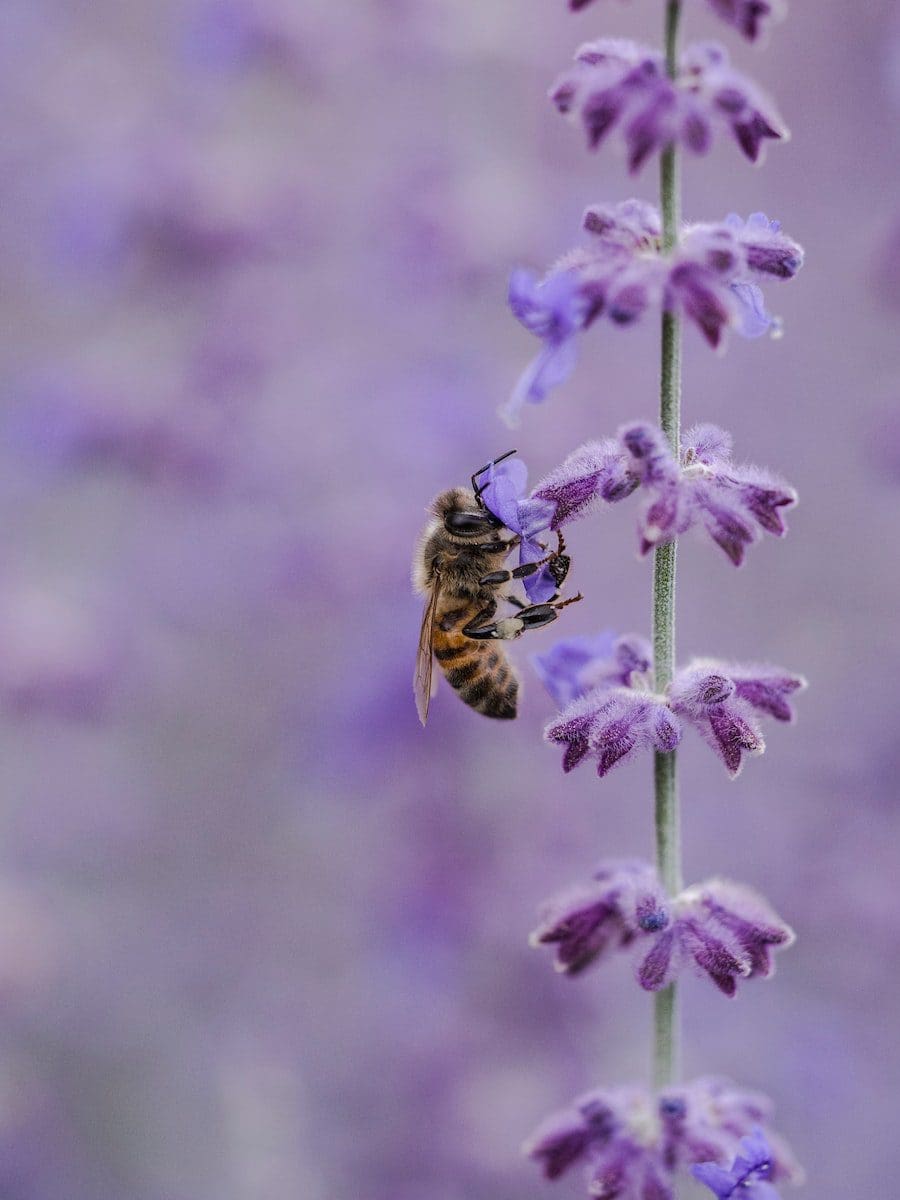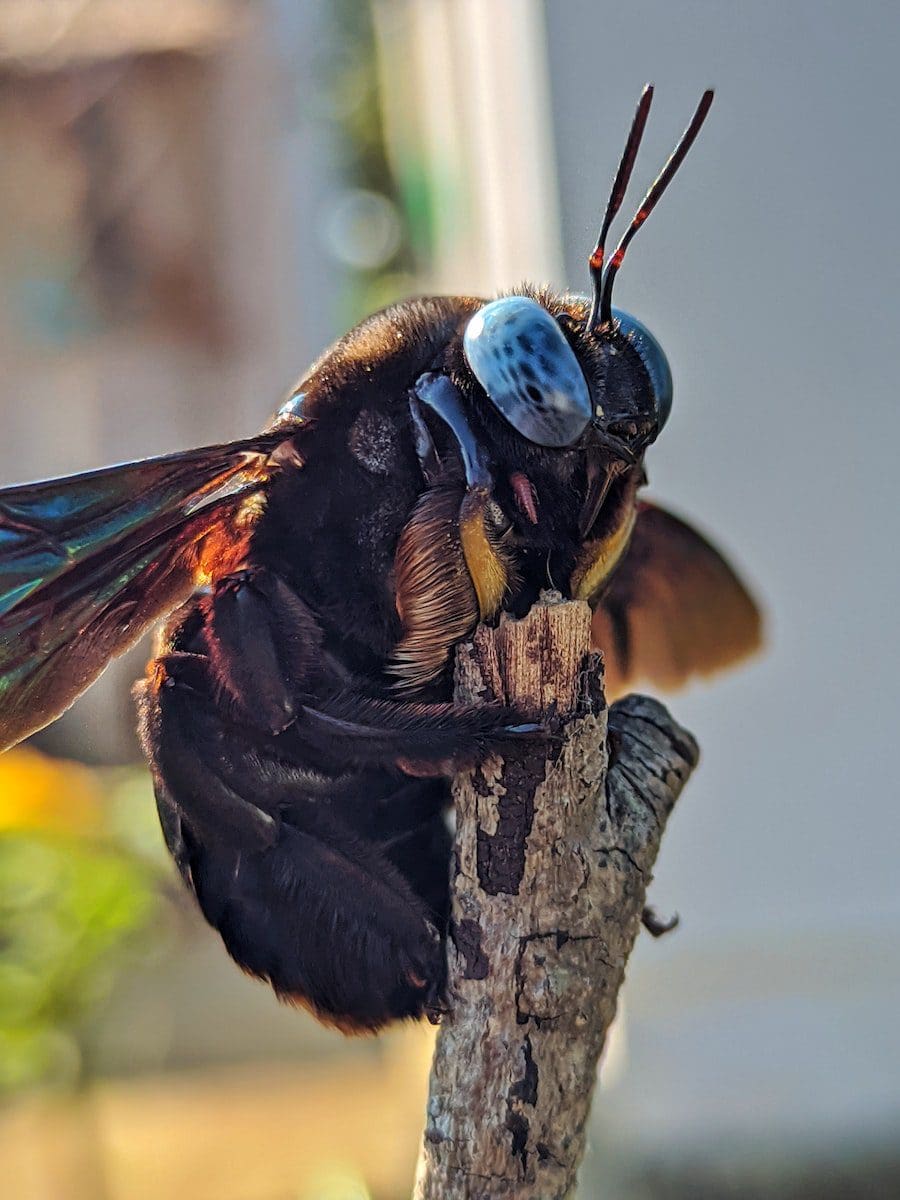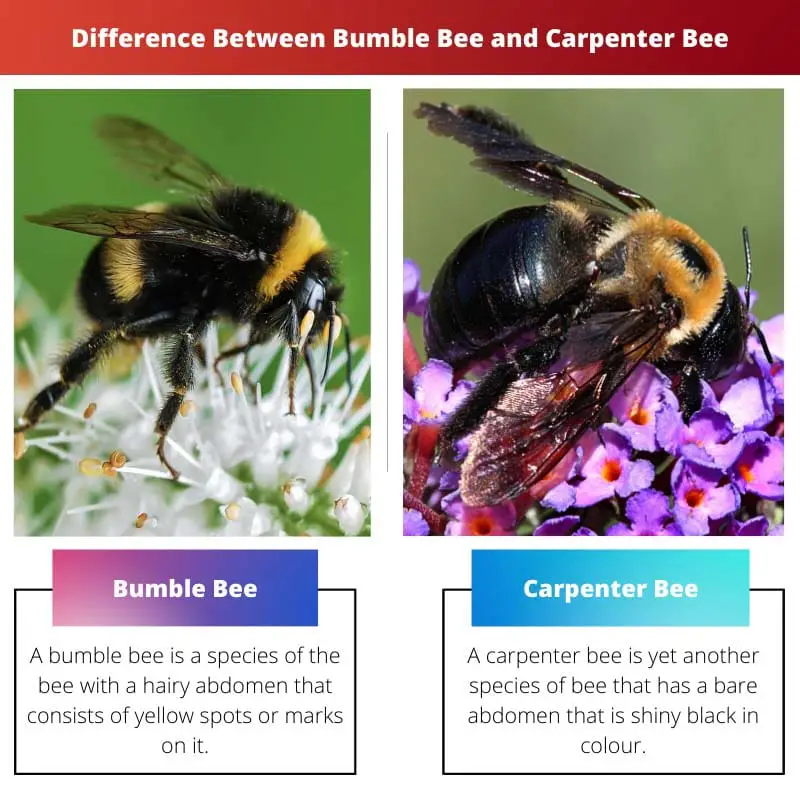Just like all the other species that reside within the environment, bees do too. Along with building their own habitat, they come to help nature in various ways.
Their primary function is to produce honey or suck nectar from flowers, assisting in pollination. Several varieties of bees are there who perform different tasks. Bumble bees and Carpenter bees are two of them.
Key Takeaways
- Bumble bees have fuzzy, round bodies and live in social colonies, whereas carpenter bees have sleek, shiny abdomens and lead solitary lives.
- Carpenter bees bore holes into wood to create nests, whereas bumble bees nest in abandoned rodent burrows or under debris.
- Both bee species help in pollination, but bumble bees are more efficient due to their higher flower visitation rates.
Bumble Bee vs Carpenter Bee
Bumble bee is a bee species characterized by their hairy abdomen with yellow spots, social behavior, and stinging mechanism which they use to protect their nest. Carpenter bee is a type of bee that is easy to recognize by its shiny black abdomen, isolated behavior and flying pattern like diving and sprinting.

A bumble bee is a species of bee with a hairy abdomen that consists of yellow spots or marks on it. They are colonial and build their best with the other bumble bees.
They use the stinging mechanism as protection for their nest. They behave aggressively when it comes to their protection and involve in stinging for this matter.
On the other hand, a carpenter bee is yet another species of bee that has a bare abdomen that is shiny black in colour. They follow an isolated lifestyle and have a flying pattern that involves diving, sprinting and chasing.
They are believed to sting only when extreme provocation takes place. However, it can end the reproduction cycle as well as the life of the bee.
Comparison Table
| Parameters of Comparison | Bumble Bee | Carpenter Bee |
|---|---|---|
| Genus | Bumble bees come under the genus Bombus. | Carpenter bees come under the genus Xylocopa. |
| Appearance | The abdomen is full of hair with yellow spots on it. | It has a bare and shiny black abdomen. |
| Characteristics | It is colonial and loves to stay in colonies. | It is isolated and involved in chasing other bees. |
| Stinging | It stings to protect the nest. | It does not sting actively. |
| Pollinator | It acts as a pollinator for crops and wildflowers. | It acts as a pollinator for shallow flowers. |
| Nesting | It builds a nest together with other bumble bees. | It builds tunnels in trees. |
What is Bumble Bee?
Categorised under the genus Bombus, a bumble bee has no less than 250 species. They belong to the Apidae family of bees and are primarily spread over higher altitudes and latitudes of the Northern Hemisphere.
This species of bee are extremely social and build colonies with the queen bee.
Cuckoo bumble bees are the exception in nest building. They are parasitic and invade others’ nests.
They take over the nests and lay their eggs in them. Coming to the physical features of the bumble bee, it has a round body full of soft hair, which makes it appear fuzzy.
The abdomen is also hairy and has yellow spots. The female’s hind leg is converted to a pollen basket.
Bumble bees feed primarily on nectar with their hairy, long tongues. For their young ones, they collect pollen, and for storage, they collect nectar.
Some of them even steal nectar by making holes at the flower base, avoiding the transfer of pollen at that moment.
Bumble bees turn hostile to protect their nests, and they sting due to this. The stinging does not have any effect on the bee’s health.
Bumble bees act as vital pollinators for crops as well as wildflowers. Over the years, there have been several shreds of evidence about bumble bees carrying harmful diseases.

What is Carpenter Bee?
Carpenter bee is a name given to a bee species categorised under the genus Xylocopa. It includes 31 subgenera and 500 bees. The name ‘carpenter’ is derived from the nesting behaviour of this species.
They build their nests by burrowing into hard parts of trees or plants. They are not at all social. Instead, they are isolated. They create tunnels for laying their eggs.
The species is vast, and the members of this species are confused with each other due to very few physical differences. Most of them are black and have bare abdomen.
In some cases, yellow colour can be seen on it. Rather than that, the male and female carpenter bees differ in terms of stinging ability.
Carpenter bees only involve in stinging if there is any serious threat to them. The males do not have stingers, while the females do.
However, stinging ruptures the reproduction cycle in the female bee and poses a threat to her life. This is another reason why carpenter bees do not sting actively.
Carpenter bees are marked as significant pollinators for some shallow flowers. They are also important for pollination in flowers that possess varieties of lids.
Due to their short mouthparts, several carpenter bees steal nectar by tearing up the flower petals as they are unable to reach farther. However, this minimizes the production of seeds and fruits in plants.

Main Differences Between Bumble Bee and Carpenter Bee
- The Bumble bee has a hairy abdomen, while the carpenter has a bare abdomen.
- Bumble bees sting very to protect their nests, but carpenter bees sting only in case of serious threats.
- Bumble bees are colonial, whereas carpenter bees stay isolated.
- Carpenter bees build tunnels and lay their eggs in them, while bumble bees stay with others in nests.
- Pollinators for wildflowers are bumble bees, and pollinators for shallow flowers are carpenter bees.




